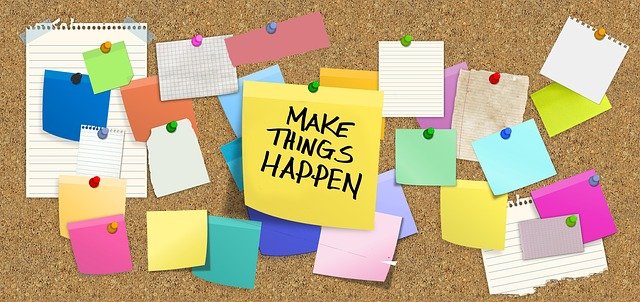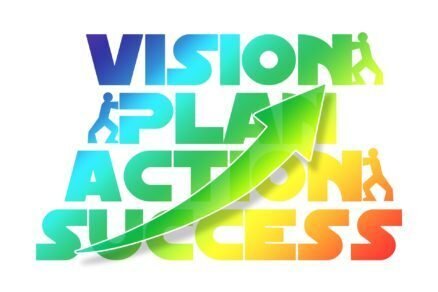As an empowering tool, vision boards have amassed considerable attention for their incredible capabilities in goal-setting and manifestation. “Mastering Vision Boards: A Detailed Guide” invites you to harness the potential of this compelling modality.
As you navigate, enlightening insight will be revealed as each topic on vision boards is explored meticulously. Move confidently through your journey, as you refine your knowledge and master the art of utilizing vision boards to transform your aspirations into reality.
Understanding Vision Boards
What is a Vision Board?
A vision board is a powerful tool that seeks to align your brain with the outcomes you most want to attract. It’s a tangible representation of the future you envision, usually presented in the form of a collage of images and words. It’s a dream bank that stirs your deep-seated aspirations, ignites your inner power and prompts your subconscious mind to work towards achieving your long-term goals.
The Psychology Behind Vision Boards
The concept of vision boards is deeply rooted in the psychological principle of visualization. According to research, our brains respond strongly to visual stimulation. We naturally understand and retain visual information better than the information we read or hear. When you constantly see images associated with your aspirations, your brain interprets them as already accomplished, thus increasing focus, determination, and motivation needed to achieve them.
Benefits of Using a Vision Board
Vision boards have numerous benefits. They help stir positive emotions, thereby increasing motivation and focus. They also serve as a constant reminder of what you intend to achieve, enhancing your mindfulness towards these goals. Vision boards also keep you accountable, pushing you towards actionable steps you need to take to actualize your dreams. Lastly, they enhance creativity and personal growth by prompting you to step out of your comfort zone.
Setting Up Your Vision Board
Choosing the Right Type of Board
Choosing the right board for your vision largely depends on your personal preference. It could be a cork board, magnetic board, digital board, or even sections of your notebook turned into a vision board. Your choice should reflect where you’d feel most comfortable placing your desires.
Ideal Size and Location for Your Vision Board
The size and location of your vision board depend on how you intend to use it. If you wish to add as many goals as possible, a larger board may be necessary. Regardless of size, an ideal location for your vision board is a place where you can easily see it daily. This might be in your office, bedroom, or living room.
Materials Needed for a Vision Board
To create a physical vision board, you’ll need a board, magazines for pictures, scissors to cut out your images, and adhesive to paste your images and words. If you are creating a digital version, you’d need to use a drag-and-drop tool that allows you to upload and organize images and words in a desired layout.
Identifying Your Goals
The Importance of Setting Clear Goals
Setting clear goals provides a sense of direction and purpose in life. It offers a tangible standard against which you can measure your progress and adjust your methods if need be. Furthermore, clear goals boost motivation, determination and self-confidence as you achieve them.

Examples of Long-term and Short-term Goals
Short-term goals could include things like reading a book within a month, achieving a promotion within a year, or losing a specified amount of weight within several weeks. Long-term goals might entail owning your own house within the next five years, retiring by 50, or setting up your own business within a decade.
How to Break Down Bigger Goals
Large goals can be overwhelming. Therefore, it’s essential to break them down into smaller, manageable tasks. Create a realistic timeline for each smaller task and commit to it.
Visualizing Your Goals
The Principle of Visualization
Visualization is a mental technique that involves envisioning the desired outcome of your goals. The principle of visualization supports the notion that “seeing is achieving.” When you visualize your goals as already achieved, you stimulate the same neural pathways in your brain as if you’d actually achieved them, prompting you to work even harder towards your goals.
How to Find Images that Represent Your Goals
You can find images from many different sources, including magazines, newspapers, and online platforms. These images should stir positive emotions and reflect your desired outcomes.
How to Use Words and Phrases on Vision Boards
Adding words and phrases to your vision board creates a stronger connection between your goals and your perception of achieving them. They should be positive, affirming, and reflective of the goal image to create a comprehensive message to your subconscious mind.
Organizing Your Vision Board
Creating Sections for Different Life Areas
To facilitate a holistic approach towards achieving your goals, it could be beneficial to create different sections on your vision board that corresponds to different life areas such as career, health, personal development, relationships, etc. Each section should contain specific goals tailored to that area of life.
Optimal Layout for Your Vision Board
There’s no one-size fits all approach when it comes to layout. The objective is to create an environment that harnesses positivity and motivation. Arrange your images and words to create harmony and balance, ensuring that all of them are clearly visible.
Refreshing and Updating Your Vision Board
Your vision board needs to be updated regularly to stay aligned with your changing goals and priorities. It’s recommended to reassess your goals every six months or so and make necessary adjustments.
Using Your Vision Board
Daily Routines for Vision Board Use
Incorporate your vision board into your daily routine. Spend a few moments each day meditating on your visualized goals and brainstorming steps to achieve them.
Creating a Positive Mindset
Create a positive mindset by focusing on the goals you’ve achieved rather than on what you’ve not yet accomplished. Train your mind to view all experiences as learning opportunities rather than setbacks.
Tracking Progress with Your Vision Board
Use your vision board to track your progress. As you accomplish each goal, mark it off or remove it from the board to maintain focus on the remaining aspirations.
Overcoming Challenges with Vision Boards
Common Obstacles When Using Vision Boards
Common obstacles include lack of clarity in goal-setting, impatience, and inconsistency in using your board. Address these issues by prioritizing clarity in your goals, exercising patience with your progress, and developing a daily interaction with your vision board.
How to Stay Motivated
To stay motivated, you may want to add short-term, easier-to-achieve goals alongside your long-term ones. Celebrating small victories can help sustain your motivation in the long-run.
Dealing with Setbacks and Readjusting Goals
When setbacks occur, it’s crucial to stay resilient. Don’t interpret setbacks as failures but as opportunities for growth and learning. Re-evaluate your strategies and adjust your goals as necessary in the face of these challenges.
Case Studies of Successful Vision Boards
Famous Individuals who Have Used Vision Boards
Vision boards have been used by successful professionals including Olympians who’ve used these tools to keep their training goals in mind and celebrities who’ve used them to actualize their career aspirations.
Corporate Success Stories with Vision Boards
Vision boards have also been used by corporations to encourage team building, promote creativity, and improve employee motivation and productivity.
How Vision Boards have Changed Lives
Many people credit their success to using vision boards. By relentlessly focusing on and visualising their goals, they’ve managed to materialize their ambitions and consequently transform their lives.
Vision Boards and Law of Attraction
The principle of Law of Attraction
The law of attraction states that like attracts like. When we focus on positive or negative thoughts, we attract positive or negative experiences in our lives.
How Vision Boards Complement Law of Attraction
Vision boards act as a physical manifestation of the law of attraction. By visualizing and focusing on our goals, we send messages into the universe about what we wish to attract, thus triggering the law of attraction to work in our favor.
Making the Law of Attraction Work with Your Vision Board
To effectively use the law of attraction with your vision board, you need to attach strong, positive emotions to your goals. feel as if you’ve already achieved your goals to emit similar vibrations that will attract similar outcomes.
Expanding Your Vision Board Practice
Turning your Vision Board into a Habit
Just like any other skills, continuously using your vision board turns it into a potent habit. Ensure that you consistently take actions toward achieving your visualized goals.
Creating Vision Boards for Different Areas of Life
To promote integrated growth, you may want to create separate vision boards for every area of your life. This will help you to set specific goals for each area and work towards achieving them in an organized manner.
Using Digital Platforms and Apps for Vision Boards
Various digital platforms and applications allow you to create online vision boards. Such platforms can be beneficial for those who prefer having their vision boards conveniently accessible on their digital devices at all times.
Check out this free ebook for more on creating success… Think and Grow Rich by Napoleon Hill
